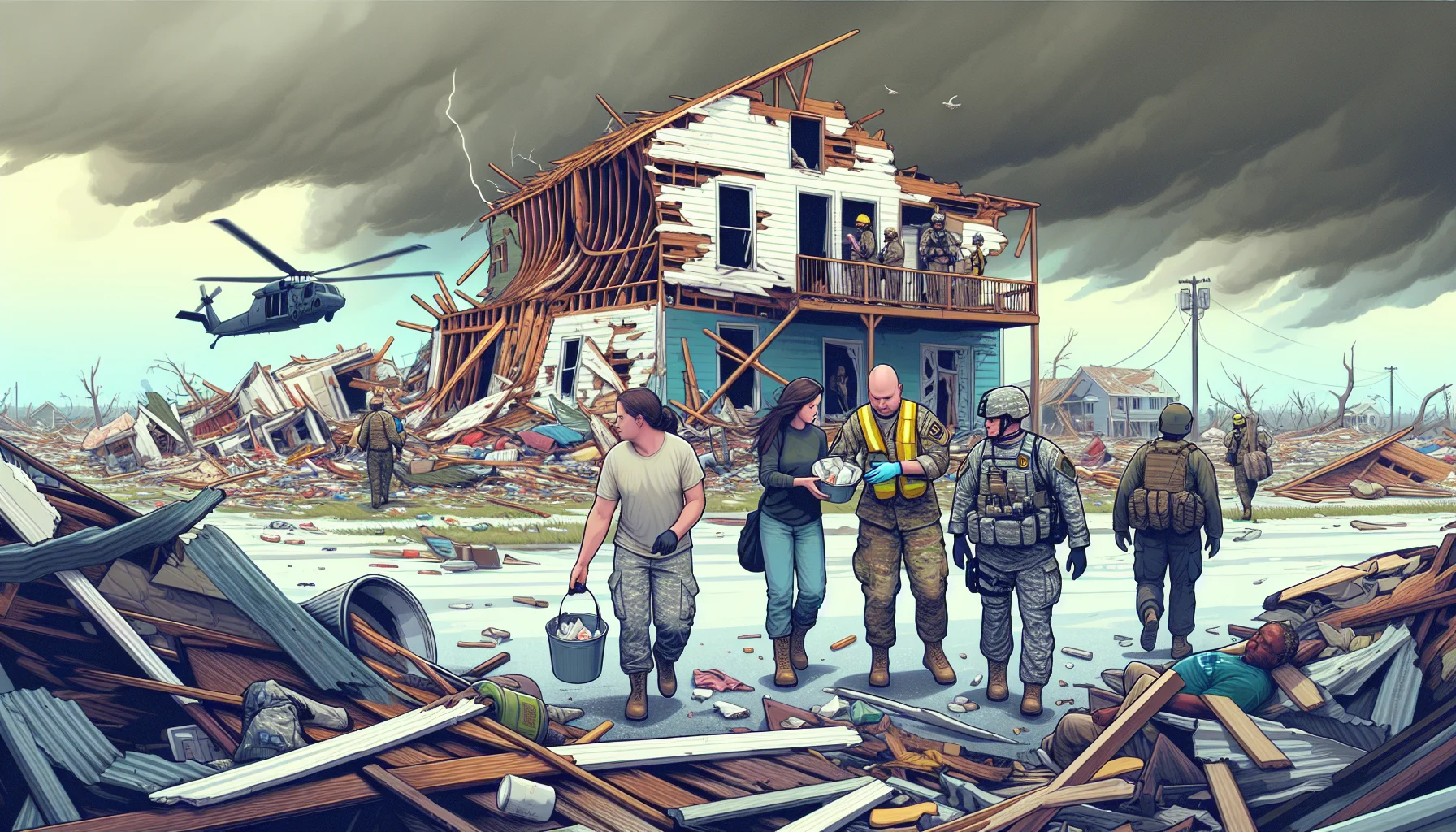
The 2008 Super Tuesday Tornado Outbreak
by: The Calamity Calendar Team
February 5, 2008
A Perfect Storm Brews
February 5, 2008, was forecasted to be a monumental day in the United States, primarily because over 20 states were involved in the presidential primary elections known as Super Tuesday. Voters flooded polling stations, eager to voice their choice for the next leader of the nation. Yet, unbeknownst to many, another kind of storm was brewing above their heads. The atmospheric conditions over the Southern United States were aligning ominously; high humidity, formidable wind shear, and an unstable atmosphere created a recipe for disaster.
The early hours of that Tuesday morning saw the warm, moist air moving in from the Gulf of Mexico, clashing with the cold air seeping down from the north. By mid-morning, meteorologists at the Storm Prediction Center had their eyes firmly glued to their screens. The potent combination of meteorological factors prompted immediate warnings. Tornado watches were issued with alarming frequency across central and southern regions, urging residents to remain vigilant as they went about their daily lives.
Chaos Unleashed Across the South
As evening descended on February 5, the skies unleashed their fury. Arkansas found itself in the crosshairs of one of the fiercest tornado outbreaks in recent history. The small community of Atkins was caught off guard when an EF4 tornado rolled through with terrifying vigor. The deafening roar and relentless winds of up to 200 miles per hour left a trail of devastation in its wake. Families were separated, homes were reduced to splinters, and sadly, lives were lost in the chaos. Tales of heroism among neighbors and communities sparked amid reports of destruction, yet for many, it was too late.
The destruction did not end there. As the night wore on, the storms moved eastward with tenacity, barreling through Tennessee, Mississippi, and Kentucky. Each tornado spawned felt more terrifying than the last, with supercells cultivating tornadoes well into the night and early morning hours of February 6. The long-track tornadoes covered distances that defied comprehension, leaving behind miles of ruined landscapes and shattered lives.
Dawn After the Storm
By the time the storm system lost its strength the following morning, the Southern United States was left grappling with the enormity of the aftermath. The scope of destruction was staggering, with 87 confirmed tornadoes touching down over two days, cutting paths through nine states. The loss was immeasurable: 57 souls perished, scores were injured, and communities were brought to their knees. The economic toll was significant, with estimates placing damages at over $500 million.
Emergency response teams acted swiftly, launching search and rescue missions even amidst precarious conditions. The National Guard was deployed, and state governments declared emergencies to unlock federal funds for recovery efforts. Stories of survival emerged; tales of those who huddled in storm cellars or clung to hope as everything was torn away. But amid the narratives of survival, there was also grief—a profound sense of loss for the lives and communities so drastically altered by nature's whim.
Thanks for subscribing!
Learning and Evolving
In the wake of such catastrophe, the federal and state authorities pondered hard questions about preparedness and response. Discussions led to policy changes that emphasized better communication systems, sophisticated weather forecasting tools, and public safety campaigns aimed at educating people on how to respond when faced with tornado threats.
Today, more than a decade later, the 2008 Super Tuesday tornado outbreak remains a significant event in meteorological history. Advances in technology allow for more accurate predictions, giving communities precious time to prepare and react. Research into supercell formations continues to be a key focus as scientists strive to diminish the threat posed by these violent twisters.
The scars may yet fade, and the towns may rebuild, but the lessons learned from that turbulent February remain. For those who lived through it, the memory of the storms that invaded their skies would forever serve as a somber reminder of nature's overwhelming power and the resilience needed to overcome it.
Stay in the Loop!
Become a Calamity Insider and get exclusive Calamity Calendar updates delivered straight to your inbox.
Thanks! You're now subscribed.